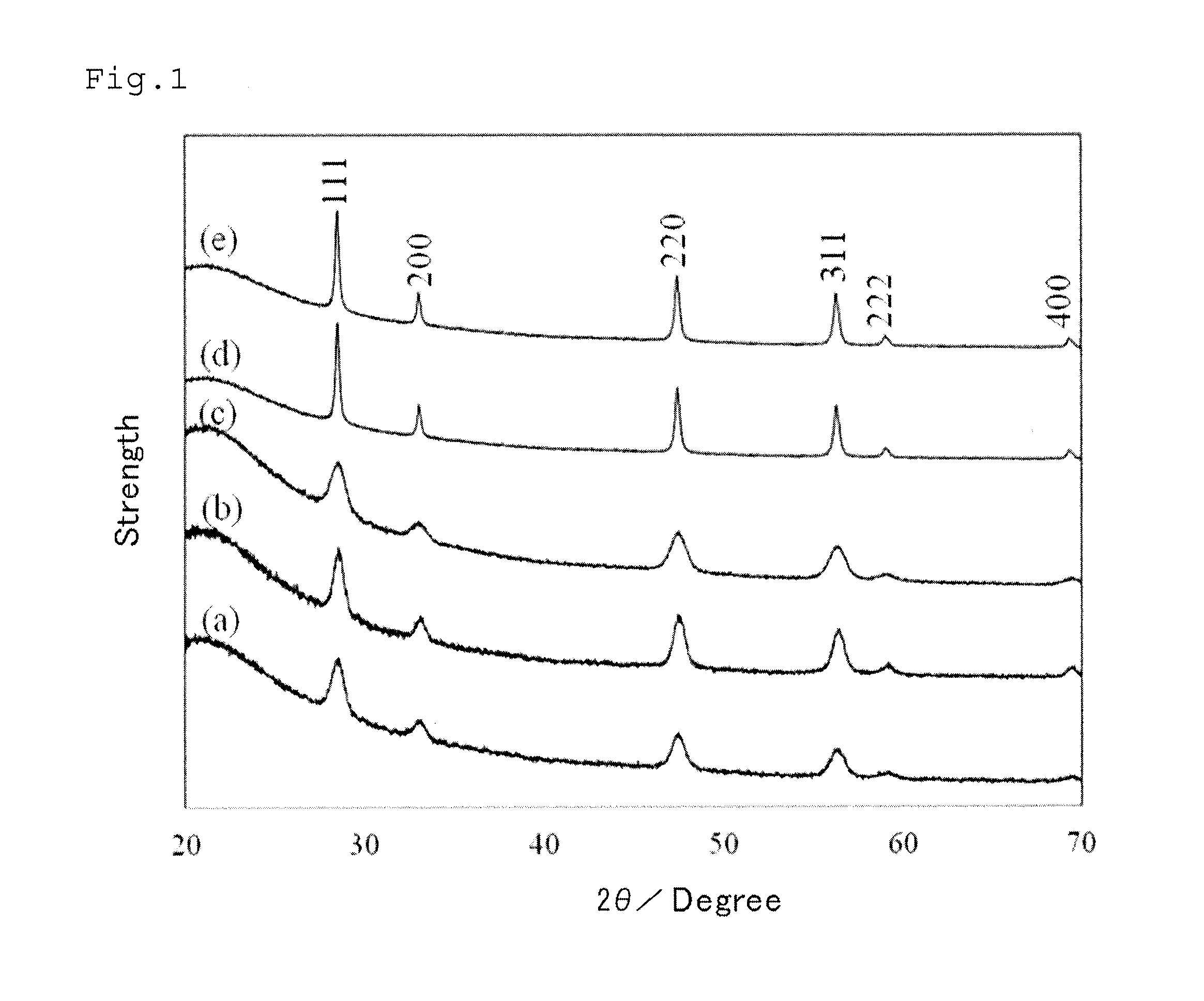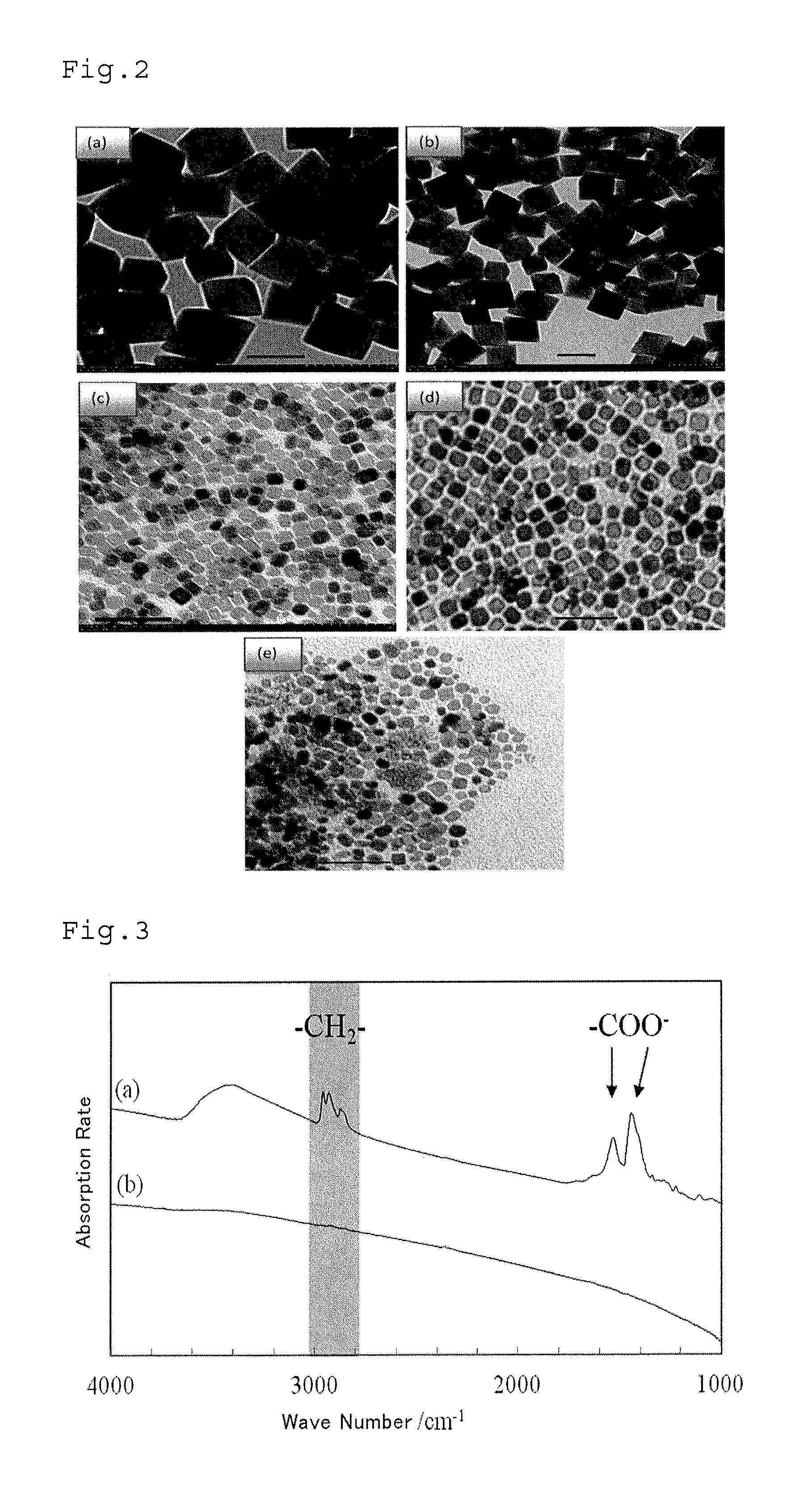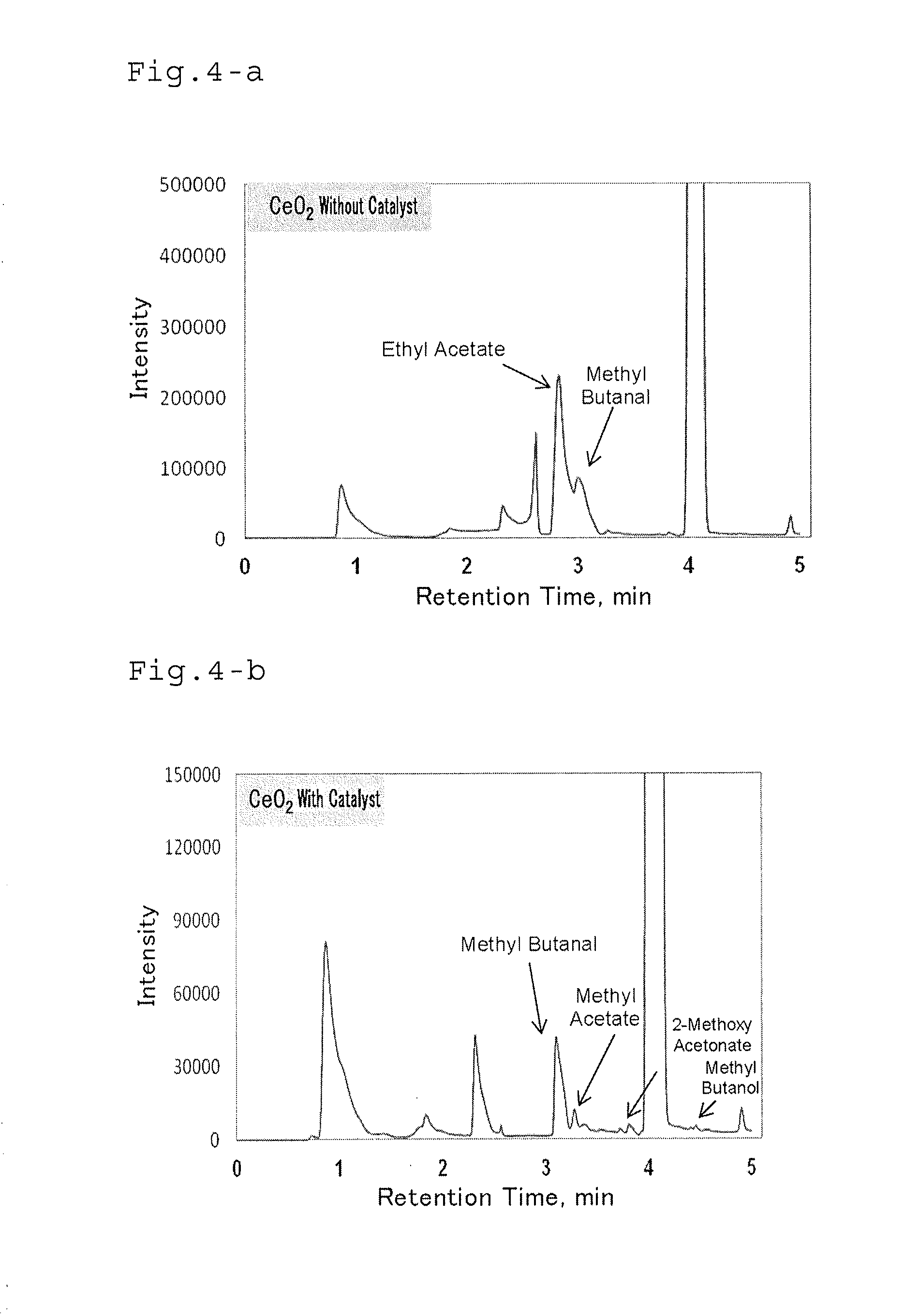Method of processing organic substance in presence of water, contact reaction device and system including same and method of recovering waste heat from low-temperature heat source
a technology of organic substances and contact reactions, which is applied in the direction of metal/metal-oxide/metal-hydroxide catalysts, energy input, and chemical production, etc., can solve the problems of catalyst deactivation, heavy hydrocarbon production, and coke generation, so as to improve the overall efficiency of the energy system, efficiently recover waste heat, and efficiently obtain a product
- Summary
- Abstract
- Description
- Claims
- Application Information
AI Technical Summary
Benefits of technology
Problems solved by technology
Method used
Image
Examples
example 1
Oxidative Decomposition of Acetaldehyde
[0149]Since in various synthesis reactions, carboxylic acid is an important intermediate, the oxidation of aldehyde to the corresponding carboxylic acid is considered as one of the important methods in organic synthesis. The Cannizzaro reaction which proceeds under no catalyst is a redox reaction in which a hydroxide base is used to make two molecules of aldehyde react to generate a primary alcohol and carboxylic acid. A great deal of research has been performed on the oxidation of aldehyde using molecular oxygen as an oxidizing agent. Examples thereof include an aerobic homogeneous catalyst system such as [Ni(acac)2] and an aerobic heterogeneous catalyst system such as Au / C and Ru / CeO2.
[0150]Here, in order to evaluate the performance of the CeO2 catalyst, another test was performed. The cerium oxide in the shape of a cube synthesized as described above (20 mg) and 2.57 ml of an acetaldehyde aqueous solution (2.0 M) were put into a reactor. The...
example 2
Oxidative Decomposition of Lignin
[0158]In the decomposition reaction of lignin (copolymer of a guaiacol skeleton and glyceraldehyde) under hydrothermal conditions, not only hydrolysis but also the retro aldol reaction of aldehyde is produced, and a larger amount of aldehyde is generated. The aldehyde is subjected to Friedel-Crafts reaction with a phenol skeleton to advance the polymerization. Hence, although the decomposition proceeds, the polymerization also proceeds. If the aldehyde can be converted into a carboxylic acid by being oxidized, since a carboxylic acid does not react with phenol in terms of the Friedel-Crafts reaction, it is possible to reduce the polymerization.
[0159]Hence, under hydrothermal conditions shown in FIG. 6, the catalyst CeO2 was used in the proportion of 3 or 10 to the weight of lignin, and thus the oxidative decomposition of lignin was performed. A batch type reactor was used, and thus the reaction was performed at 300 to 400° C. for 10 minutes, and ther...
example 3
Oxidative Decomposition of Pigment
[0161]In order to check whether or not the oxidative decomposition reaction is produced even at a lower temperature, a test was performed using, as a model molecule, a pigment molecule which is more easily visually recognized.
[0162]As the pigment, indigo carmine (acid blue 74) was used which is commonly known as indigo chin represented by the following formula. This compound acts as a pH indicator and a redox indicating agent in a chemical reaction.
[0163]Cerium oxide in the shape of a cube (20 mg) and 2.0 ml of an aqueous solution of the pigment (0.01 M) were put into a reactor. The reaction temperature was set at 250 to 350° C. FIG. 10 (without use of the catalyst) shows that the pigment was not changed after the reaction. This means that without the presence of the catalyst, a large proportion of the pigment was not decomposed under hydrothermal conditions before the criticality. However, as shown in FIG. 11, when under the same temperature condit...
PUM
| Property | Measurement | Unit |
|---|---|---|
| temperature | aaaaa | aaaaa |
| reaction temperature | aaaaa | aaaaa |
| diameter | aaaaa | aaaaa |
Abstract
Description
Claims
Application Information
 Login to View More
Login to View More - R&D
- Intellectual Property
- Life Sciences
- Materials
- Tech Scout
- Unparalleled Data Quality
- Higher Quality Content
- 60% Fewer Hallucinations
Browse by: Latest US Patents, China's latest patents, Technical Efficacy Thesaurus, Application Domain, Technology Topic, Popular Technical Reports.
© 2025 PatSnap. All rights reserved.Legal|Privacy policy|Modern Slavery Act Transparency Statement|Sitemap|About US| Contact US: help@patsnap.com



